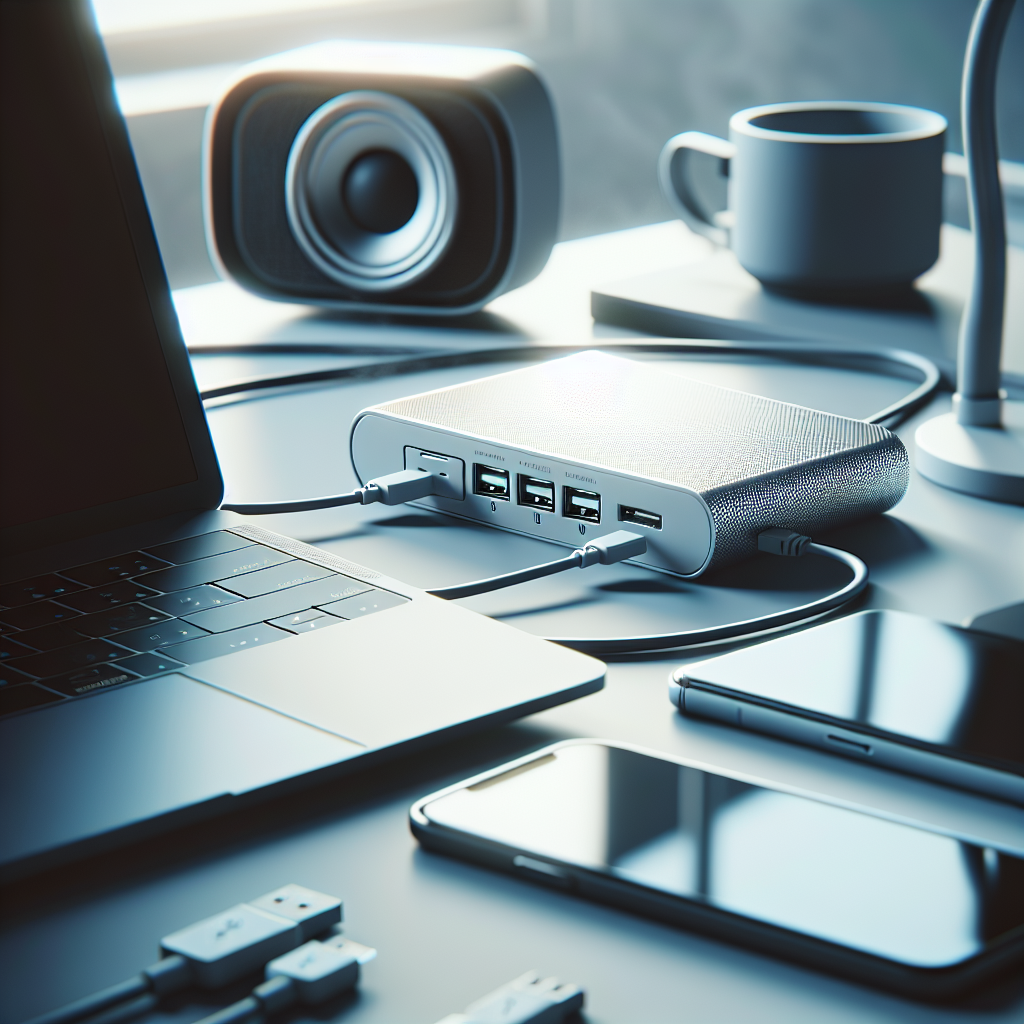USB hubs have become essential components in modern computer setups, facilitating the connection of multiple devices to a single USB port. However, users often encounter issues with signal interference that can hamper performance. Understanding how to prevent such interference is crucial for optimal functioning. In this article, we will explore effective strategies to maintain a seamless connection while using a USB hub.
To better understand the factors affecting USB performance and the potential for signal interference, let’s first review some important data regarding USB signals.
| USB Version | Max Data Rate | Cable Length Limit | Common Interference Sources |
|---|---|---|---|
| USB 2.0 | 480 Mbps | 5 meters | Electrical devices, poor shielding |
| USB 3.0 | 5 Gbps | 3 meters | Wireless devices, nearby cables |
| USB 3.1 | 10 Gbps | 2 meters | Electromagnetic fields, power lines |
Understanding USB Signal Interference
Signal interference can occur when the USB data transmission is disrupted by external factors, leading to data loss or slower transfer speeds. Several reasons can cause this interference, including:
- Electrical interference from nearby devices
- Poor quality or damaged USB cables
- Overloading the USB hub with multiple high-powered devices
- Inadequate shielding of the hub
Identifying Sources of Interference
To effectively prevent signal interference, it’s imperative first to identify the sources within your environment:
1. Electrical Devices
Many everyday devices emit electromagnetic fields, such as:
- Monitors and televisions
- Wireless routers
- Speakers
- Power supplies
2. USB Hub Quality
The quality of the USB hub can greatly affect performance. Characteristics to look for include:
- Standard compliance (USB 2.0, 3.0, etc.)
- Power management features
- Robust design with good shielding
3. Cable Quality
The USB cables themselves can also be a source of interference. Poor-quality or excessively long cables may degrade the signal.
Strategies to Prevent Signal Interference
Now that we understand the potential sources of interference, let’s explore several strategies to help mitigate these issues:
1. Choose Quality USB Hubs
Investing in a high-quality USB hub can significantly reduce interference. Look for features that enhance signal integrity:
- Built-in surge protection
- High-quality capacitors and resistors for stability
- Shielded cables and connections
2. Manage Device Placement
Carefully positioning devices can reduce interference:
- Avoid placing the USB hub near large electrical appliances.
- Keep the hub away from sources of radiation, such as microwaves.
- Store the hub in an area with proper airflow to prevent overheating.
3. Use Shorter Cables
To maintain signal integrity, opt for shorter USB cables whenever possible:
- Limit the length of cables to as short as required.
- Utilize active USB cables for longer distances, which can maintain signal strength.
4. Limit the Number of Connected Devices
Overloading a USB hub can lead to degraded performance and interference:
- If possible, use powered hubs for devices that require more power.
- Connect only essential devices to avoid traffic on the hub.
5. Keep Data and Power Cables Separate
Separating power and data cables can reduce electromagnetic interference (EMI):
- Use distinct paths for power and data cables.
- Utilize shielded power cables when necessary.
6. Regular Maintenance
Periodic maintenance checks can ensure that all equipment functions at an optimal level:
- Inspect cables for signs of wear or damage.
- Clean connection ports to remove dust or debris.
Advanced Tips for Specific Situations
Every setup is unique, and some environments may require additional tactics:
1. Wireless Device Interference
With an increase in wireless devices, users may experience Bluetooth or Wi-Fi interference:
- Consider using USB adapters that operate on different frequencies.
- Try to maintain adequate distances between the USB hub and wireless devices.
2. Sensitive Equipment
Businesses that rely on sensitive equipment should take extra precautions:
- Utilize USB extenders designed to minimize interference for critical devices.
- Implement power line filters to prevent electrical noise.
Testing Your Setup
After implementing the above strategies, it is essential to test your USB setup:
1. Performance Measurement
Utilize benchmarking software to gauge data transfer speeds and overall performance:
- Monitor transfer speeds before and after applying changes.
- Document differences to identify successful strategies.
2. Troubleshooting Steps
If issues persist, consider the following:
- Disconnect all devices and reconnect them one by one to isolate the problem.
- Switch USB ports to check for performance differences.
Conclusion
Preventing signal interference when using a USB hub is critical for maintaining effective communication between devices. By considering the quality of your hub and cables, managing device placement, and keeping your setup well-organized, you can greatly reduce the risk of interference. Regular testing and adjustments based on your specific equipment and environment will help ensure you achieve optimal performance.

